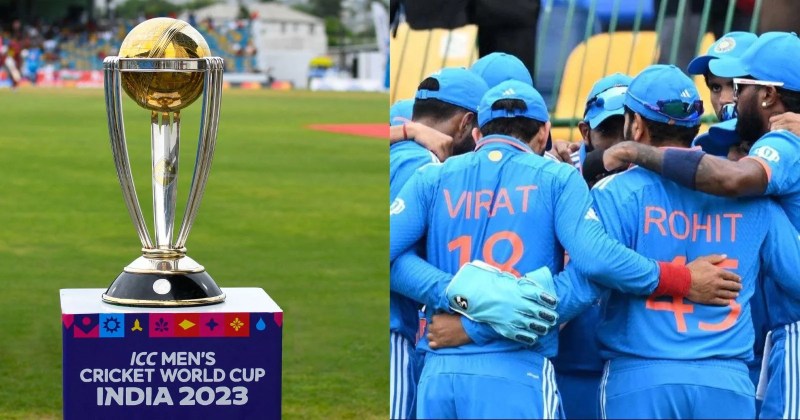Unless and until the focus shifts from maximising air time for the game’s behemoths to actually producing a tournament that has more knockouts, more possibilities for the underdog, and more thrill for a neutral, the Cricket World Cup will remain a misnomer.
At the end of 48 matches where Australia, perhaps inevitably, were crowned champions, there is a lingering question that the ICC Men’s Cricket World Cup leaves us with. What is a “World Cup” supposed to be?
This is not to be confused with the questions surrounding the 50-over format itself. That is for another day. This is also not supposed to be about India not being able to win the ICC title that has eluded them for more than a decade now, despite all the resources at their disposal. Trying to answer that will take a whole week.
Also Read: World Cup 2023 in India sets all-time tournament attendance record of 1.25 million
This is, at its heart, a question surrounding what a tournament of this magnitude is supposed to mean for the game. Because, as it stands, the last two editions of this tournament have been played in a format that is rigged to favour the best teams to rise to the top. It is not a format meant for fairytales. It is not one designed for shock and awe because the shocks are almost always temporary and the awe is fleeting. It is a tournament where teams fight it out for a league phase that seems to last forever followed by just three knockout matches.
Sure, there can be a school of thought that goes: yes, the best teams will surely now play each other in the end. A World Cup is for the best teams, is it not? But cricket is already so restrictive in featuring just 10 teams (for the men, the women still only have 8 teams). The “World” barely exists in the World Cup as it is, and this format has almost nearly rendered the “Cup” meaningless. Essentially, it is a Champions League.
That is why the Netherlands defeating South Africa – a result that had far-reaching consequences in the slightly more global T20 World Cup – barely caused a ripple at CWC23. That is why Afghanistan defeating Pakistan – a momentous, generation-defining result for a team on the rise – meant nothing in the larger scheme of things. Australia losing two matches, New Zealand losing four matches meant only the order of top four was ever in question – and that too, not for very long.
This is no slight on Australia’s recovery or New Zealand’s ability to find an optimum level of operation to reach the business end. They did just what they had to do in a tournament that allowed them breathing space to recover from setbacks. But on the flip side, it is impossible to escape the fact that this is essentially a format that enables broadcasters and powers-that-be to bank on at least nine guaranteed matches for the likes of India, Australia, and England.
The game itself is more global, so comparing cricket with football is perhaps too simplistic. And followers of football would tell you that the Fifa World Cup format will soon have its issues too. But, at the very least, it is a tournament that allows for miracle moments. It lets the mighty powerhouses in the world to feel the pressure of an early defeat. Some recover like Argentina did last year after losing to Saudi Arabia. Others can’t, as we have seen many times in the past but more recently with Morocco and Japan making the most of outperforming giants like Belgium and Germany. Those huge wins for the lesser-favoured meant something immense.

Even some of the most incredible Cricket World Cup matches from the past have been knockouts. The highs of the 1996 quarterfinal between India and Pakistan in Bengaluru followed by the shock of the semifinal in Kolkata. South Africa’s many incredible semifinal (defeats). Australia – after having won in 1999, 2003, 2007 – finally letting the crown slip, at the hands of Yuvraj Singh-inspired India in Ahmedabad.
Even in the just concluded edition where Head broke hearts in the final, there is a strong case to be made for the two most exciting matches – the most tense, the ones with most at stake – to be the two semifinals. The 70-run margin wouldn’t fool any of us into thinking the India win against New Zealand came at a canter in Mumbai. The South Africa-Australia clash in Kolkata would go into the annals of famous matches in the tournament’s history. Sure there were a few thrillers smattered here and there during the league stage, but as mentioned earlier, the result of most of the group matches just couldn’t have the same impact on a tournament.
Simply, that sort of jeopardy simply isn’t possible when the focus of a Cricket World Cup is to dedicate the majority of the eyeballs for the big teams, with 3 knockout matches out of 48 in total.
In 2027, there will be at least a minor course correction with the men’s ODI World Cup tournament going up to 14 teams. But as per ICC, the format is set to two groups of seven, with the top three in each group progressing to a Super Six stage: yet again minimising the possibility of a major team exiting early barring a disaster.
Unless and until the focus shifts from maximising air time for the game’s behemoths to actually producing a tournament that has more knockouts, more possibilities for the underdog, and more thrill for a neutral, the Cricket World Cup will remain a misnomer.
